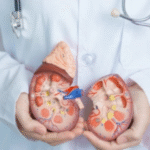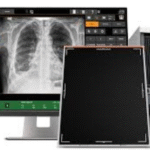1. Introduction to ECG Interpretation
Understanding how to interpret a 12 lead ECG is essential for healthcare professionals in diagnosing various cardiac conditions. This cheat sheet serves as a quick reference guide to aid in ECG interpretation.
2. Lead Placement
Proper lead placement is critical for obtaining accurate ECG readings. Ensure electrodes are placed correctly on the patient’s chest and limbs according to standard protocols.
3. ECG Paper
Familiarize yourself with the ECG paper layout, including the horizontal and vertical axis, as well as the standard calibration marks for measuring time and voltage.
4. P Wave
The P wave represents atrial depolarization and typically appears as a small, upright wave before the QRS complex. Ensure the P wave is present in all leads and has a consistent morphology.
5. PR Interval
The PR interval reflects the time it takes for the electrical impulse to travel from the atria to the ventricles. Normal PR interval duration ranges from 0.12 to 0.20 seconds (3 to 5 small squares).
6. QRS Complex
The QRS complex represents ventricular depolarization and consists of three distinct waves: Q, R, and S. Measure the duration of the QRS complex to assess for conduction abnormalities.
7. ST Segment
The ST segment is the portion of the ECG between the end of the S wave and the beginning of the T wave. Changes in the ST segment may indicate myocardial ischemia, injury, or infarction.
8. T Wave
The T wave represents ventricular repolarization and is typically upright in most leads. Inverted or peaked T waves may suggest myocardial ischemia, electrolyte imbalances, or other cardiac abnormalities.
9. QT Interval
The QT interval represents ventricular depolarization and repolarization. Prolongation of the QT interval may predispose patients to arrhythmias, including torsades de pointes.
10. Axis Deviation
Assess the QRS axis to determine if there is any deviation from the normal axis (approximately +30 to +90 degrees). Axis deviation may indicate cardiac hypertrophy, bundle branch blocks, or other conduction abnormalities.
11. Bundle Branch Blocks
Identify bundle branch blocks by examining the QRS complex morphology. Right bundle branch block (RBBB) is characterized by wide QRS complexes with an rSR’ pattern in V1, while left bundle branch block (LBBB) shows broad, slurred S waves in lateral leads.
12. Chamber Enlargement
Look for signs of atrial or ventricular enlargement, such as increased amplitude of P waves (atrial enlargement) or widened QRS complexes (ventricular enlargement), which may indicate underlying cardiac pathology.
13. Myocardial Infarction
Recognize patterns suggestive of myocardial infarction, including ST-segment elevation (STEMI) or ST-segment depression (NSTEMI) in specific leads corresponding to the affected coronary artery territory.
14. Ischemia vs. Injury
Differentiate between myocardial ischemia (ST-segment depression) and injury (ST-segment elevation) based on the degree and pattern of ST-segment changes, as well as associated symptoms and clinical context.
15. Tachyarrhythmias
Identify tachyarrhythmias such as atrial fibrillation, atrial flutter, ventricular tachycardia, or supraventricular tachycardia based on characteristic ECG findings, including irregular R-R intervals or rapid, regular QRS complexes.
16. Bradycardias
Recognize bradycardias, including sinus bradycardia, atrioventricular blocks, or escape rhythms, characterized by slow heart rates and specific ECG patterns such as prolonged PR intervals or absent P waves.
17. Electrolyte Abnormalities
Consider electrolyte abnormalities (e.g., hyperkalemia, hypokalemia, hypercalcemia) as potential causes of ECG changes such as peaked T waves, flattened T waves, or prolonged QT intervals.
18. Artifact Recognition
Distinguish true ECG findings from artifacts caused by patient movement, electrode placement errors, or technical issues. Ensure a clean ECG tracing by minimizing artifact and optimizing lead contact.
19. Clinical Correlation
Always correlate ECG findings with the patient’s clinical presentation, medical history, and other diagnostic tests to arrive at an accurate diagnosis and appropriate management plan.
20. Consultation and Second Opinion
Seek consultation or a second opinion from a colleague or cardiac specialist for complex ECG interpretations or cases where uncertainty exists regarding diagnosis or management.
21. Documentation
Document ECG findings, including rhythm, rate, intervals, segments, and any abnormalities observed, in the patient’s medical record for future reference and continuity of care.
22. Continuous Learning
Stay updated on ECG interpretation guidelines, advances in cardiology, and emerging diagnostic technologies through ongoing education, training, and participation in professional development activities.
23. Clinical Decision-Making
Use ECG interpretation skills to guide clinical decision-making, including initiation of treatment, referral to cardiology, or further diagnostic evaluation, to optimize patient outcomes and safety.
24. Quality Assurance
Participate in quality assurance initiatives and regular ECG reviews to ensure accuracy, consistency, and adherence to standards in ECG interpretation, reporting, and














